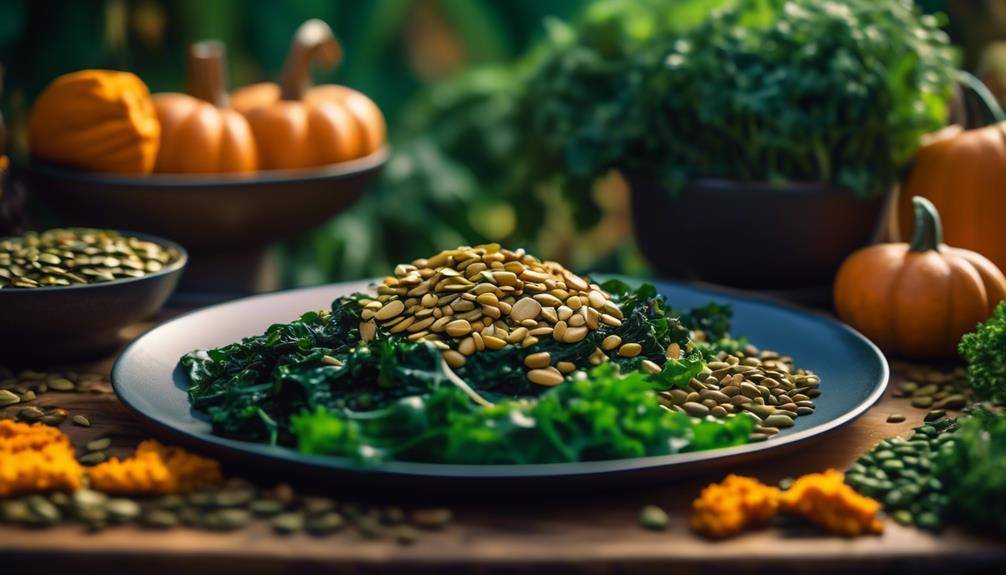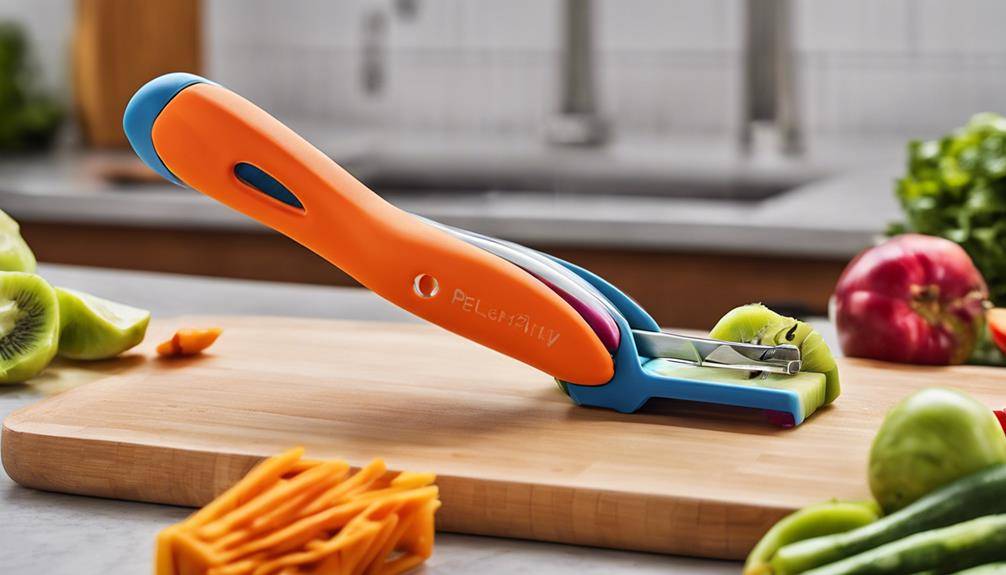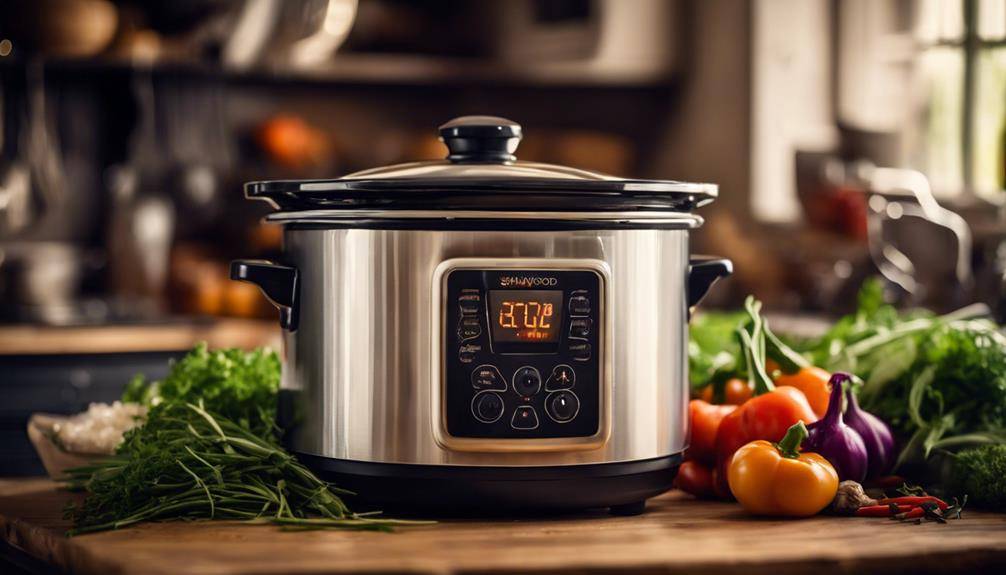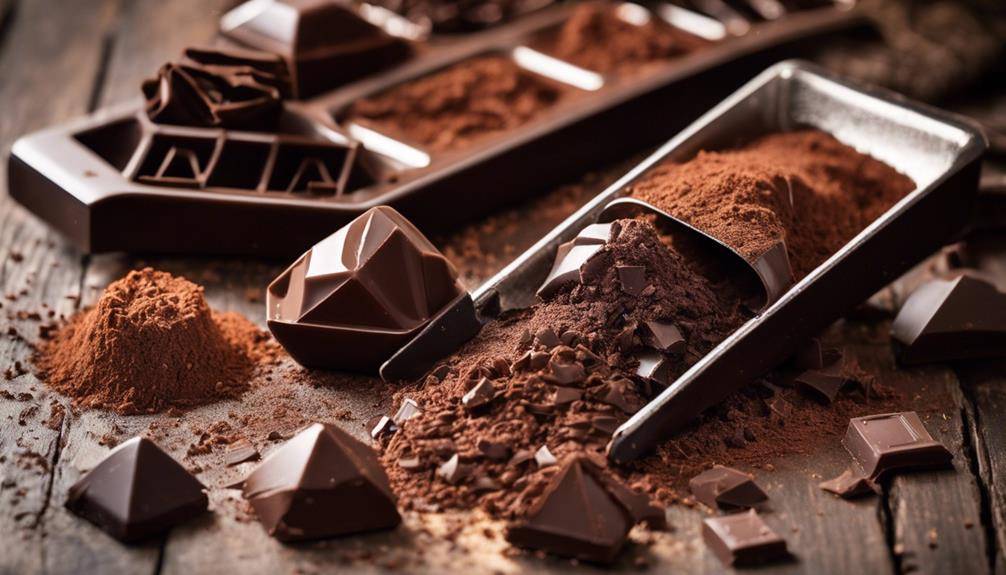How To Meet Iron Requirements on Vegan Diet

How To Meet Iron Requirements on Vegan Diet; Are you a vegan who loves a good spinach salad? Well, here’s some food for thought: did you know that incorporating iron-rich foods into your plant-based diet is vital for meeting your iron requirements? While it may seem challenging to obtain enough iron without consuming animal products, fear not! In this discussion, we will explore the importance of iron in a vegan diet, the recommended daily intake, and the top plant-based sources that can help you meet your iron needs. So, get ready to discover some surprising sources of iron that will leave you feeling nourished and satisfied.
Importance of Iron in Vegan Diet
Iron is an essential nutrient that plays a vital role in the vegan diet, ensuring proper functioning of the body and preventing iron deficiency anemia. When following a vegan diet, it is important to pay attention to your iron intake, as plant-based sources of iron are not as easily absorbed by the body as animal-based sources. This is especially crucial for vegan athletes, as iron is necessary for optimal athletic performance.
Iron is necessary for the production of hemoglobin, a protein in red blood cells that carries oxygen to the muscles. When iron levels are insufficient, the body cannot produce enough healthy red blood cells, leading to a decrease in oxygen delivery and energy levels. This can significantly impact athletic performance, causing fatigue, decreased endurance, and impaired recovery.
Symptoms of iron deficiency in vegans may include fatigue, weakness, pale skin, shortness of breath, and decreased immune function. Athletes may also experience a decline in performance, increased risk of injuries, and difficulty in recovering from intense training sessions. Therefore, it is important for vegan athletes to pay close attention to their iron intake and ensure they are meeting their daily requirements.
To increase iron absorption from plant-based sources, it is recommended to consume iron-rich foods alongside sources of vitamin C, such as citrus fruits, tomatoes, and bell peppers. These foods can enhance iron absorption in the body. Additionally, cooking with cast-iron cookware can also contribute to iron intake.
Recommended Daily Iron Intake for Vegans
When it comes to ensuring optimal iron levels on a vegan diet, understanding the recommended daily intake is key. Iron is an essential mineral that plays a crucial role in the body, including the formation of red blood cells and the transportation of oxygen. However, iron deficiency is one of the most common nutrient deficiencies in the world, and vegans are particularly at risk due to the absence of heme iron found in animal-based foods.
The recommended daily iron intake for vegans is higher than that for non-vegans. According to the National Institutes of Health (NIH), adult men and postmenopausal women should aim for 8 milligrams (mg) of iron per day, while premenopausal women need 18 mg per day. For vegans, these recommendations are 1.8 times higher due to the lower bioavailability of non-heme iron found in plant-based foods. Therefore, vegan men and postmenopausal women should aim for 14 mg of iron daily, while premenopausal vegan women should strive for 32 mg per day.
It is important to note that meeting these recommended daily iron intake levels solely through plant-based sources may require careful planning and consideration. Plant-based sources of iron include legumes, tofu, tempeh, whole grains, nuts, seeds, and dark leafy greens. Additionally, consuming vitamin C-rich foods, such as citrus fruits or bell peppers, alongside iron-rich foods can enhance iron absorption. Alternatively, some vegans may choose to supplement their diet with iron tablets or fortified foods to ensure adequate iron intake.
Top Plant-Based Iron Sources
To ensure an adequate intake of iron on a vegan diet, it is important to incorporate a variety of plant-based sources that are rich in this essential mineral. While it is true that iron from plant sources is not as easily absorbed by the body as iron from animal sources, there are several ways to enhance iron absorption and meet your daily requirements without relying on meat or dairy products.
One of the best plant-based sources of iron is legumes, such as lentils, chickpeas, and black beans. These versatile foods not only contain high levels of iron but also provide a good amount of protein and fiber. Incorporating legumes into your meals can help you meet your iron needs while ensuring a balanced and nutritious diet.
Another excellent source of iron is dark leafy greens, including spinach, kale, and Swiss chard. These vegetables are not only packed with iron, but they also contain vitamin C, which can enhance iron absorption. Pairing these greens with foods rich in vitamin C, such as citrus fruits or bell peppers, can further maximize iron absorption.
Seeds and nuts, such as pumpkin seeds, sesame seeds, and cashews, are also great plant-based sources of iron. Additionally, they provide healthy fats and other essential nutrients. Including seeds and nuts in your diet can help boost your iron intake while adding variety and flavor to your meals.
If you are struggling to meet your iron requirements through diet alone, vegan iron supplements can be a helpful option. These supplements are typically derived from plant sources and can provide a concentrated dose of iron. However, it is important to consult with a healthcare professional before starting any supplementation regimen to ensure proper dosing and avoid any potential interactions with other medications or health conditions.
Dark Leafy Greens
Dark leafy greens are a nutrient-dense group of vegetables that are rich in iron and other essential nutrients. Including them in your vegan diet can provide numerous nutritional benefits and help you meet your iron requirements. Here are some reasons why dark leafy greens should be a staple in your plant-based diet:
- High iron content: Dark leafy greens such as spinach, kale, and Swiss chard are excellent sources of iron. Consuming these greens regularly can help prevent iron deficiency and promote healthy blood production.
- Abundance of vitamins and minerals: In addition to iron, dark leafy greens are packed with other essential nutrients like vitamin C, vitamin K, calcium, and magnesium. These vitamins and minerals are crucial for maintaining overall health and supporting various bodily functions.
- Antioxidant properties: Dark leafy greens are rich in antioxidants, which help protect your cells from damage caused by harmful free radicals. Regular consumption of these vegetables can contribute to reducing the risk of chronic diseases such as heart disease and certain types of cancer.
- Versatile cooking methods: Dark leafy greens can be prepared in various ways to suit your taste preferences. They can be enjoyed raw in salads, sautéed with garlic and olive oil, or added to soups and stews. Experimenting with different cooking methods can help you discover new flavors and textures.
- Easy to incorporate into meals: Whether you choose to include them in your breakfast smoothie, lunch salad, or dinner stir-fry, dark leafy greens are versatile and can be easily incorporated into different meals throughout the day. Adding a handful of spinach to your morning omelet or topping your sandwich with some fresh kale leaves can significantly boost your nutrient intake.
Legumes and Pulses
With their high iron content and numerous other health benefits, dark leafy greens are an excellent addition to your vegan diet; now let’s explore the nutritional value and advantages of incorporating legumes and pulses into your plant-based meals. Legumes and pulses, such as lentils, chickpeas, and beans, are not only delicious but also packed with essential nutrients that can help you meet your iron requirements.
One of the major benefits of consuming legumes and pulses is their high iron content. Iron is crucial for the production of red blood cells and the transportation of oxygen throughout the body. Incorporating these plant-based protein sources into your meals can help ensure you’re getting an adequate amount of iron in your diet.
In addition to iron, legumes and pulses are also rich in other nutrients that are vital for your overall health. They are an excellent source of protein, fiber, and complex carbohydrates. This combination of nutrients helps to keep you feeling full and satisfied, while also providing energy for your daily activities.
Furthermore, legumes and pulses are low in fat and cholesterol, making them a heart-healthy choice. They are also rich in vitamins and minerals, including folate, potassium, and magnesium, which are important for supporting a healthy immune system and proper muscle function.
Incorporating legumes and pulses into your vegan diet is not only beneficial for your health but also for the environment. These plant-based protein sources have a lower environmental impact compared to animal-based protein sources, as they require less water and produce fewer greenhouse gas emissions.
Nuts and Seeds
Now let’s talk about nuts and seeds. These plant-based foods are not only delicious but also packed with essential nutrients, including iron. Nuts such as almonds, cashews, and pistachios, as well as seeds like pumpkin, flax, and chia seeds, are known for their high iron content. By incorporating a variety of nuts and seeds into your vegan diet, you can easily meet your iron requirements while enjoying their nutritional benefits.
Nutritional Content of Nuts
Nuts and seeds are rich sources of essential nutrients that can contribute to a well-rounded vegan diet. Here are some nutritional benefits and tips on portion control:
- Almonds: Packed with protein, fiber, vitamin E, and healthy fats, almonds make a nutritious snack. A small handful (about 23 almonds) is a recommended serving.
- Walnuts: These brain-shaped nuts are high in omega-3 fatty acids, which are important for heart health. A quarter cup of walnuts is a suitable portion.
- Chia seeds: These tiny powerhouses are loaded with fiber, omega-3 fatty acids, and minerals like calcium and iron. A tablespoon of chia seeds provides a good nutritional boost.
- Flaxseeds: Rich in omega-3 fatty acids and lignans, flaxseeds are great for heart health and hormone balance. One to two tablespoons of ground flaxseeds can be added to your meals.
- Pumpkin seeds: A good source of iron, magnesium, and zinc, pumpkin seeds can be enjoyed as a snack or sprinkled on salads. A quarter cup is an ideal serving size.
Incorporating a variety of nuts and seeds into your vegan diet can help meet your nutritional needs while practicing portion control.
Iron-Rich Seeds
Incorporating iron-rich seeds into your vegan diet is an important way to ensure you meet your nutritional needs. Nuts and seeds are excellent sources of iron, making them a valuable addition to your meals and snacks. Some iron-rich seeds include pumpkin seeds, sesame seeds, flaxseeds, and sunflower seeds. These seeds can be easily incorporated into your diet by adding them to salads, smoothies, or homemade granola.
Additionally, you can grind them into a powder and use them as a seasoning or topping for various dishes. If you find it challenging to consume enough iron from seeds alone, you can consider making iron-rich smoothies by blending seeds with fruits, leafy greens, and plant-based milk. In some cases, vegan iron supplements may be necessary to meet your iron requirements, especially if you have increased iron needs or difficulty absorbing iron from plant-based sources. Always consult with a healthcare professional before starting any supplements.
Incorporating Nuts and Seeds
To ensure you meet your nutritional needs on a vegan diet, incorporating nuts and seeds into your meals and snacks is essential. Nuts and seeds are not only packed with essential nutrients like protein, fiber, healthy fats, vitamins, and minerals, but they also add a delightful crunch and flavor to your dishes. Here are some creative recipes with nuts and seeds that you can try:
- Sprinkle chopped walnuts or flaxseeds onto your morning oatmeal or smoothie bowl for an extra boost of omega-3 fatty acids.
- Make a homemade trail mix with almonds, pumpkin seeds, dried cranberries, and dark chocolate chips for a satisfying and nutritious snack.
- Blend cashews and nutritional yeast to create a creamy vegan cheese sauce for your pasta or nachos.
- Toast sesame seeds and sprinkle them over your stir-fried vegetables or salads for added texture and nutty flavor.
- Use ground almonds or sunflower seeds as a base for homemade energy bars or protein balls.
Whole Grains
Including whole grains in your vegan diet is an excellent way to meet your iron requirements. Whole grains, such as quinoa, brown rice, oats, and whole wheat, offer a variety of nutritional benefits that make them a valuable addition to your diet. Not only are they rich in iron, but they also provide essential nutrients like fiber, B vitamins, magnesium, and zinc. These nutrients are crucial for maintaining overall health and supporting the body’s iron absorption.
When it comes to cooking techniques, there are several ways to incorporate whole grains into your meals. One popular method is to cook them as a side dish or use them as a base for salads, stir-fries, or grain bowls. Quinoa, for example, cooks quickly and can be used in a variety of dishes. Another option is to make whole grain bread or pasta, which can be easily integrated into your daily meals. Additionally, you can experiment with different grains and cooking methods to keep your meals interesting and diverse.
To ensure optimal iron absorption from whole grains, it is recommended to pair them with vitamin C-rich foods. Vitamin C enhances the absorption of non-heme iron, which is the type of iron found in plant-based foods. You can achieve this by adding citrus fruits, bell peppers, tomatoes, or leafy greens to your meals. For example, enjoying a quinoa salad with tomatoes and bell peppers or adding spinach to your whole grain pasta can increase iron absorption.
Iron-Fortified Foods
Iron-fortified foods can be a convenient and effective way to ensure you are meeting your iron requirements on a vegan diet. These foods have been specially fortified with iron to provide an additional source of this essential mineral. Here are a few important points to consider when it comes to iron-fortified foods:
- Variety: There is a wide range of iron-fortified foods available in the market. These include breakfast cereals, bread, pasta, and even plant-based milk alternatives. Incorporating a variety of these fortified foods into your diet can help you meet your iron needs more easily.
- Bioavailability: While iron from plant-based sources is not as easily absorbed by the body as iron from animal sources, the iron in fortified foods is often more readily absorbed. This is because the iron in these foods is usually in the form of ferrous sulfate, which is more bioavailable than the iron found in plants.
- Label reading: When choosing iron-fortified foods, it’s important to read the labels carefully. Look for products that provide at least 20% of the recommended daily value for iron per serving. This ensures that you are getting a substantial amount of iron from the fortified food.
- Combining with vitamin C: Consuming iron-fortified foods with a source of vitamin C can enhance iron absorption. This can be as simple as adding a squeeze of lemon juice to your iron-fortified cereal or enjoying a glass of orange juice with your fortified plant-based milk.
- Consulting a healthcare professional: If you have concerns about meeting your iron requirements on a vegan diet, it may be helpful to consult a healthcare professional. They can assess your iron levels and provide guidance on incorporating iron-fortified foods or iron supplements into your diet if necessary.
Enhancing Iron Absorption With Vitamin C
When it comes to ensuring optimal iron absorption on a vegan diet, one effective strategy is to enhance iron absorption with the help of vitamin C. Iron plays a crucial role in the body, as it is essential for the production of healthy red blood cells and the transportation of oxygen throughout the body. However, the type of iron found in plant-based foods, known as non-heme iron, is not as easily absorbed by the body as heme iron found in animal products. This is where vitamin C comes in.
Vitamin C is known to enhance the absorption of non-heme iron by converting it into a more readily absorbable form. Including vitamin C-rich foods in your vegan meals can significantly increase iron absorption. Some excellent sources of vitamin C include citrus fruits, strawberries, bell peppers, broccoli, and kiwi.
To maximize iron absorption, try pairing iron-rich plant foods with vitamin C-rich foods. For example, squeeze lemon juice over your leafy green salad, add strawberries to your oatmeal topped with iron-fortified cereal, or enjoy a glass of orange juice with your lentil curry. These simple combinations can boost the absorption of non-heme iron and help you meet your iron requirements on a vegan diet.
It’s important to note that excessive intake of vitamin C does not further enhance iron absorption. The body has a limit to how much iron it can absorb, so it’s unnecessary to consume excessive amounts of vitamin C in an attempt to increase iron absorption. Aim for a balanced intake of vitamin C from whole foods rather than relying solely on supplements.
Avoiding Iron Inhibitors in Vegan Diet
To ensure optimal iron absorption on a vegan diet, it is important to be aware of and avoid iron inhibitors in your food choices. Iron inhibitors are substances that can hinder the absorption of iron in the body, leading to potential deficiencies. By avoiding these inhibitors, you can maximize the absorption of iron from your plant-based meals and meet your nutritional needs.
Here are five iron inhibitors commonly found in vegan diets that you should be mindful of:
- Phytates: Found in whole grains, legumes, and some nuts and seeds, phytates can bind to iron and reduce its absorption. To minimize their impact, soaking, fermenting, or sprouting these foods can help reduce phytate levels.
- Oxalates: Foods like spinach, beet greens, and rhubarb contain high levels of oxalates, which can form insoluble compounds with iron, inhibiting its absorption. Pairing these foods with vitamin C-rich sources can help counteract the inhibitory effect.
- Polyphenols: Present in tea, coffee, cocoa, and some fruits and vegetables, polyphenols can bind to iron and decrease its availability. Consuming these foods separate from iron-rich meals or adding vitamin C can enhance iron absorption.
- Calcium: While calcium is essential for bone health, high levels of calcium can inhibit iron absorption. It is recommended to consume calcium-rich foods separately from iron sources to avoid interference.
- Tannins: Found in tea, coffee, and some fruits, tannins can form complexes with iron, making it less available for absorption. Avoiding consuming these beverages with iron-rich foods can help mitigate their inhibitory effects.
Cooking Tips for Maximizing Iron Absorption
For optimal iron absorption on a vegan diet, incorporating specific cooking techniques can help maximize the availability of this essential nutrient. Cooking methods that can enhance iron absorption include soaking, fermenting, and sprouting. These techniques can increase the bioavailability of iron in plant-based foods, making it easier for your body to absorb and utilize this important mineral.
Soaking grains, legumes, and seeds before cooking can help reduce the levels of phytic acid, which is a compound that can inhibit iron absorption. By soaking these foods overnight or for a few hours, you can help break down the phytic acid and increase the availability of iron. Fermenting foods like tempeh and miso can also improve iron absorption. During the fermentation process, beneficial bacteria break down the phytic acid, making iron more accessible to your body.
Another cooking technique that can enhance iron absorption is sprouting. Sprouting involves soaking and germinating seeds, grains, or legumes until they begin to sprout. This process can increase the levels of vitamin C and other nutrients, which can improve iron absorption. Sprouted grains and legumes can be used in a variety of dishes, such as salads, stir-fries, and soups.
In addition to these cooking techniques, meal planning is also important for maximizing iron absorption on a vegan diet. Including foods rich in vitamin C, such as citrus fruits, bell peppers, and leafy greens, can help enhance iron absorption. Consuming iron-rich foods with vitamin C-rich foods can significantly increase the amount of iron your body absorbs. Planning your meals to include a variety of iron-rich plant-based foods, along with vitamin C-rich foods, can ensure you meet your iron requirements on a vegan diet.
Frequently Asked Questions: How To Meet Iron Requirements on Vegan Diet
Are There Any Negative Health Effects Associated With Consuming Too Much Iron on a Vegan Diet?
Consuming excessive iron on a vegan diet can have negative health effects. These may include constipation, nausea, stomach pain, and even iron overload, which can damage organs. It’s important to maintain a balanced intake of iron on a vegan diet.
Can Iron Supplements Be Used as a Substitute for Obtaining Iron From Plant-Based Sources?
Iron supplements can be used as a substitute for obtaining iron from plant-based sources on a vegan diet. However, it is important to consult with a healthcare professional to determine the right dosage and ensure proper absorption.
Are There Any Specific Cooking Techniques That Can Help Increase Iron Absorption From Plant-Based Foods?
To increase iron absorption from plant-based foods on a vegan diet, try cooking techniques like soaking, fermenting, and sprouting. These methods can help reduce the levels of phytates and enhance iron bioavailability in your meals.
Can Excessive Consumption of Certain Plant-Based Foods, Such as Legumes or Whole Grains, Lead to Iron Overload?
Excessive consumption of certain plant-based foods, like legumes or whole grains, can lead to iron overload. This is a concern for those following a vegan diet. It’s important to balance iron-rich foods and be aware of potential risks.
Are There Any Factors That May Increase the Risk of Iron Deficiency in Vegans, Aside From Dietary Choices?
Factors influencing iron absorption in vegans include low intake of vitamin C, phytate-rich foods, and tannins. Poor gut health can also affect iron absorption. It’s important for vegans to ensure adequate intake of iron-rich foods and optimize gut health.
Conclusion
In conclusion, meeting iron requirements on a vegan diet is entirely possible by including a variety of plant-based iron sources in your meals. Dark leafy greens, legumes and pulses, and iron-fortified foods are excellent options to ensure adequate iron intake. Additionally, enhancing iron absorption by consuming vitamin C-rich foods and avoiding iron inhibitors can further optimize iron absorption. With these strategies and cooking tips, vegans can easily meet their daily iron needs and maintain a healthy lifestyle.








